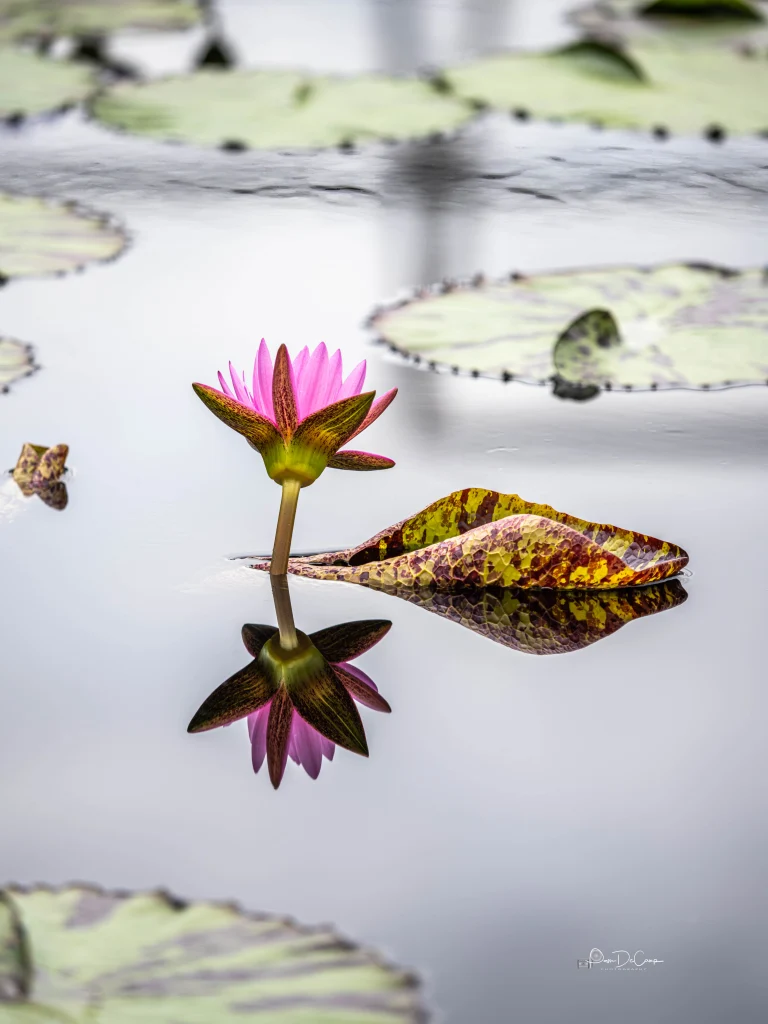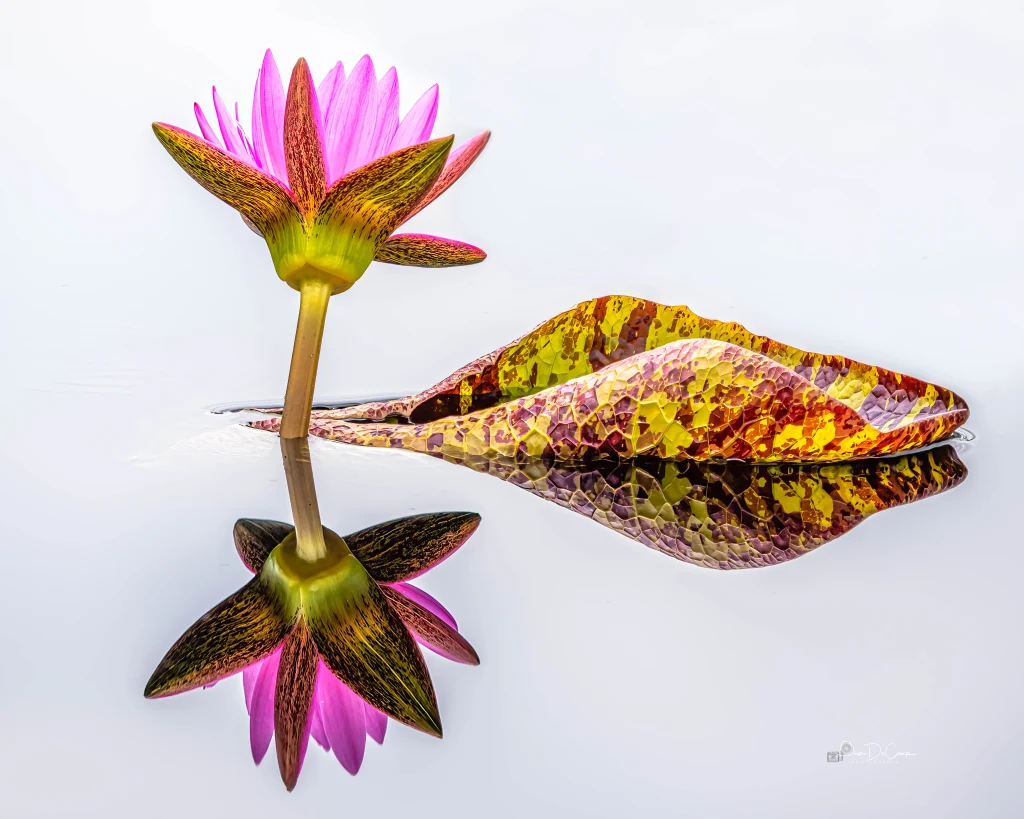True Lies in Photography

The world of photography has seen great changes over the last couple of decades. With the advances of digital photography and the increasing amount of editing software available, it is difficult to separate photographic fact from fiction. Recently, Mike Moats and Rick Sammon have had topics in their groups about whether members are purists or enjoy creativity.
Mike shared his experience of an individual who criticized his use of external programs to give his image a special look. Rick advocates for cropping and using programs to improve images. What about Ansel Adams? He was definitely the master of light; finding it, creating it, using it to make his photographs unique.
Photography, is it an art? Do photographers create? When is a photograph not a photograph? These are questions that have been tossed around for centuries! Think about double exposures, intentional camera movement, and dodging and burning. The photographer has a vision of what their photograph should look like. To compare a photographer to a painter might be unfair, but the process is similar.
A painter, comes on a scene and chooses the color palette, brushes, and type of medium to work with. The image is created with brush strokes on canvas, paper, or other medium. The painter decides the composition and the point of view they want to show. They may change their perspective (edit their work) while they are painting; a few brush strokes and the painting will look completely different. The painter/artist decides when they are finished. The thought process for the photographer is similar, but the tools are completely different.
The photographer approaches the same scene, makes a lens choice, sets the exposure, and studies the composition before pressing the shutter. Rick Sammon talks about using your camera like a drone; move it around and see what different angles look like. Zoom in, out, move forward, backward, turn the camera, try different angles, sometimes it works, sometimes it doesn’t. Not doing these activities will result in missing a unique angle or composition. It has been said many times, “all photographers do is press a button,” but wait…after they press that button they go back to their “darkroom” or computer and work on the image. One of the keys to the creative process is editing.
Editing a photograph can be very simple, just a few adjustments to exposure, contrast, sharpening. There are those who think editing is difficult or challenging, but if it is not practiced, like anything else, it will continue to be daunting. Editing software is easy to come by and a lot of photographers have an arsenal at their disposal, but yet, photographs are placed in public viewing without any adjustments. It is sad…there are many good photographs posted daily, but they could be awesome images with a little work! Those photographs have great potential!
Potential, one must see the potential in an image…the one thing that makes the image unique/special. Taking a few minutes to work on a photograph can make all the difference. There is an article that talks about the artistic eye or creative mind. There are individuals who innately have this “gift;” those who lack the artistic eye can develop it if they work on it. Developing a creative mind takes much practice and dropping some of the preconceived notions/rules about photography. Sometimes it’s just a simple crop or a minor clone, or it could be a hard crop or big clone! Again, see the potential in an image. Creativity takes work. Creatively changing an image often results in the photographic “lie.” Is it still a photograph or an enhanced digital image? The art belongs to the photographer; it is their vision, their view of the world.
Pay attention to photographs you see every day. In the photograph below, clearly the star of the show is the waterlily and the reflections. The photograph was taken at the maximum focal distance and the flower was in the middle of the pond. Take the shot or walk away? This was a single frame. It took work to make the photograph that was visualized at the time the button was pressed. Many pass up the opportunity to go the extra mile to make an image special. The final result? Is it an accurate depiction of the scene or is it a lie?
Leaves

Until recently I did not realize how many different types of leaf photographs I had. Leaves are fascinating. They bud in the spring and are a lively green; then in the fall, they change to reds, yellows, and oranges. Structurally, leaves have veins, stems, and are textually interesting. I love to bring that texture forward in my photographs.
I had posted the above before and after in my post “Creativity: Where Does it Start?” I had transformed the ordinary palm leave to be viewed “differently”. I feel as a photographer it is my job to challenge our view of reality from time to time. The processing I chose for this image changed the color as well as the perspective of the image. It also highlighted the details in the leaf and stem.
On the left you see the original image of the green leaves. I liked how the light was hitting the leaves and felt there was a “photograph” somewhere in this image. I began using my crop tool and started dragging it around the image until I settled on a crop I thought was pleasing to the eye. There was so much going on in the original photograph that I needed to isolate a section. I then converted it to black and white. The tonal range of the image worked well with that choice. I then finished my editing in On1 Effects to add texture and to bring out the details in the leaves.
The above sycamore leaf was taken with my Sigma 120 – 300 f/2.8 zoom. I removed the lower right stem with the patch tool in Photoshop, then edited the color and texture in On1 Effects. The transformation was just what I wanted.

Maple Leaf
I was trying out my Tamron 28 – 300 f/3.5 – 5.6 and captured this leaf hanging off of my maple tree. I was exploring for things to photograph with the lens as I had just purchased it from KEH. I brought out the texture and details using On1 Effects. The sharpening tools in On1 Effects does a great job bringing out the details in images.
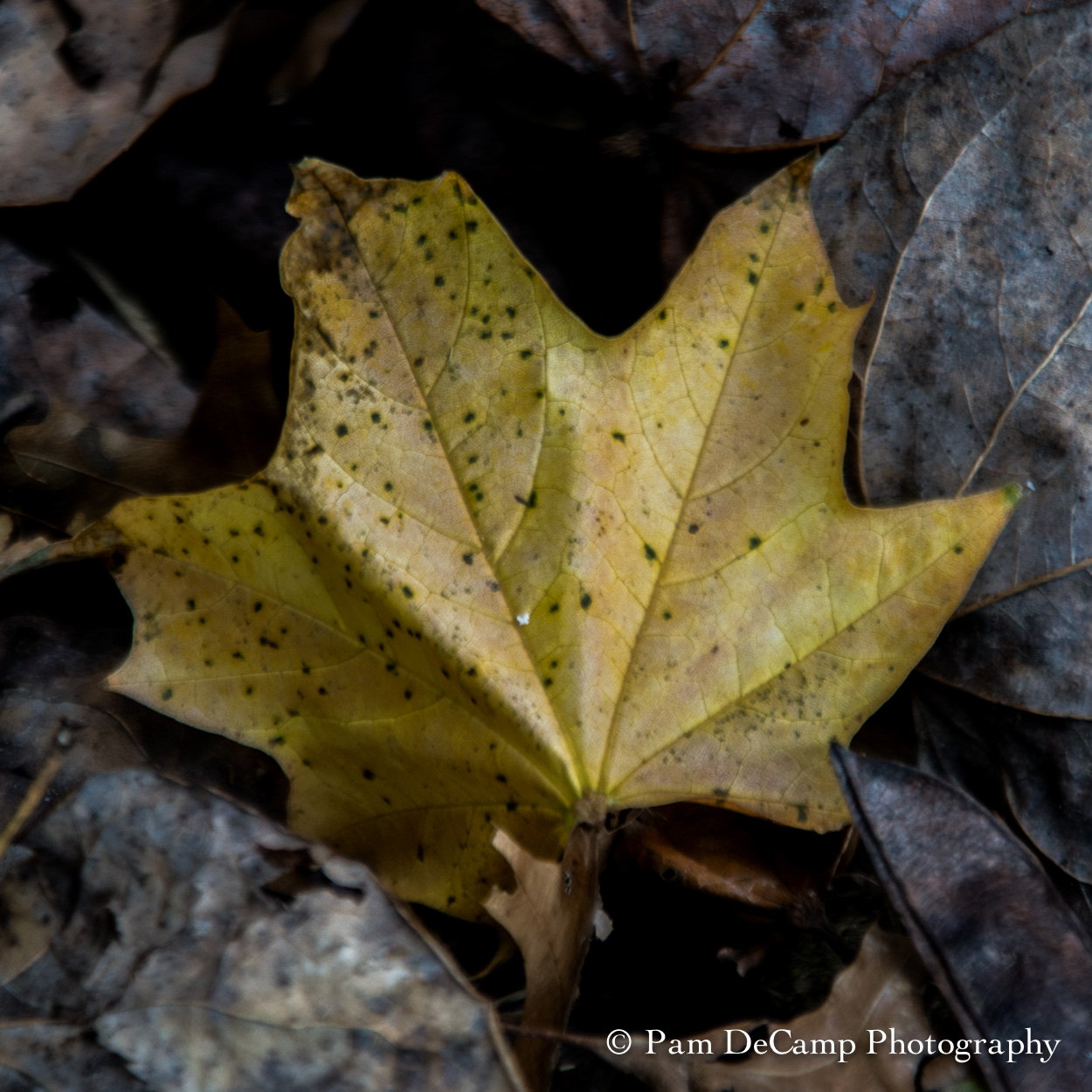
Maple Leaf
This was another leaf I was practicing on with my Tamron 28 – 300 f/3.5 – 5.6. It was a single color leaf among the dry gray and brown leaves. It caught my attention while walking around my patio.
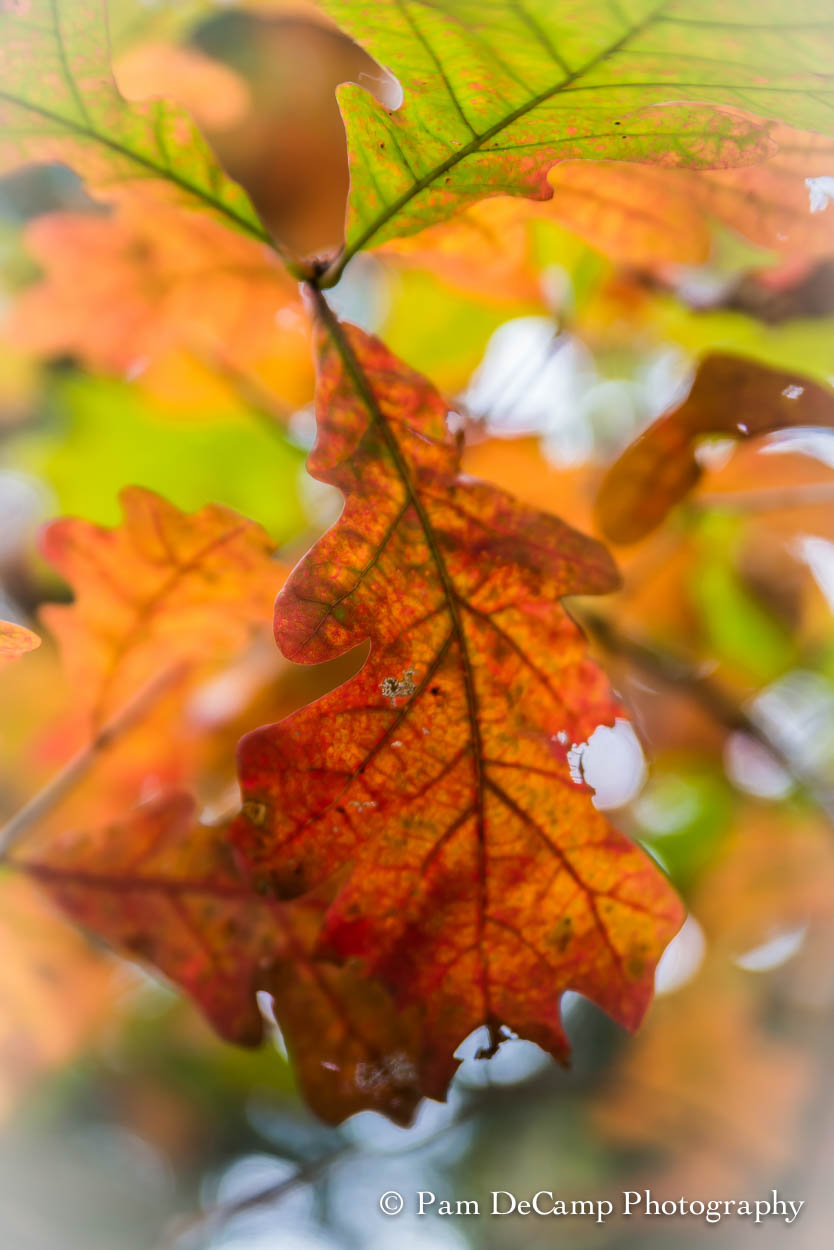
Oak Leaf
I spotted the oak leaf while walking around William and Mary College’s Campus this fall. While the image itself is a little soft, I enhanced that softness by decreasing the clarity. The colors are very vibrant. I added a soft white vignette to make the leaf stand out.
Above are a few of my other leaf images I have captured over the last year. I hope you enjoyed exploring the world of leaves! Effects 10 is available as a free download!
Focus Stacking

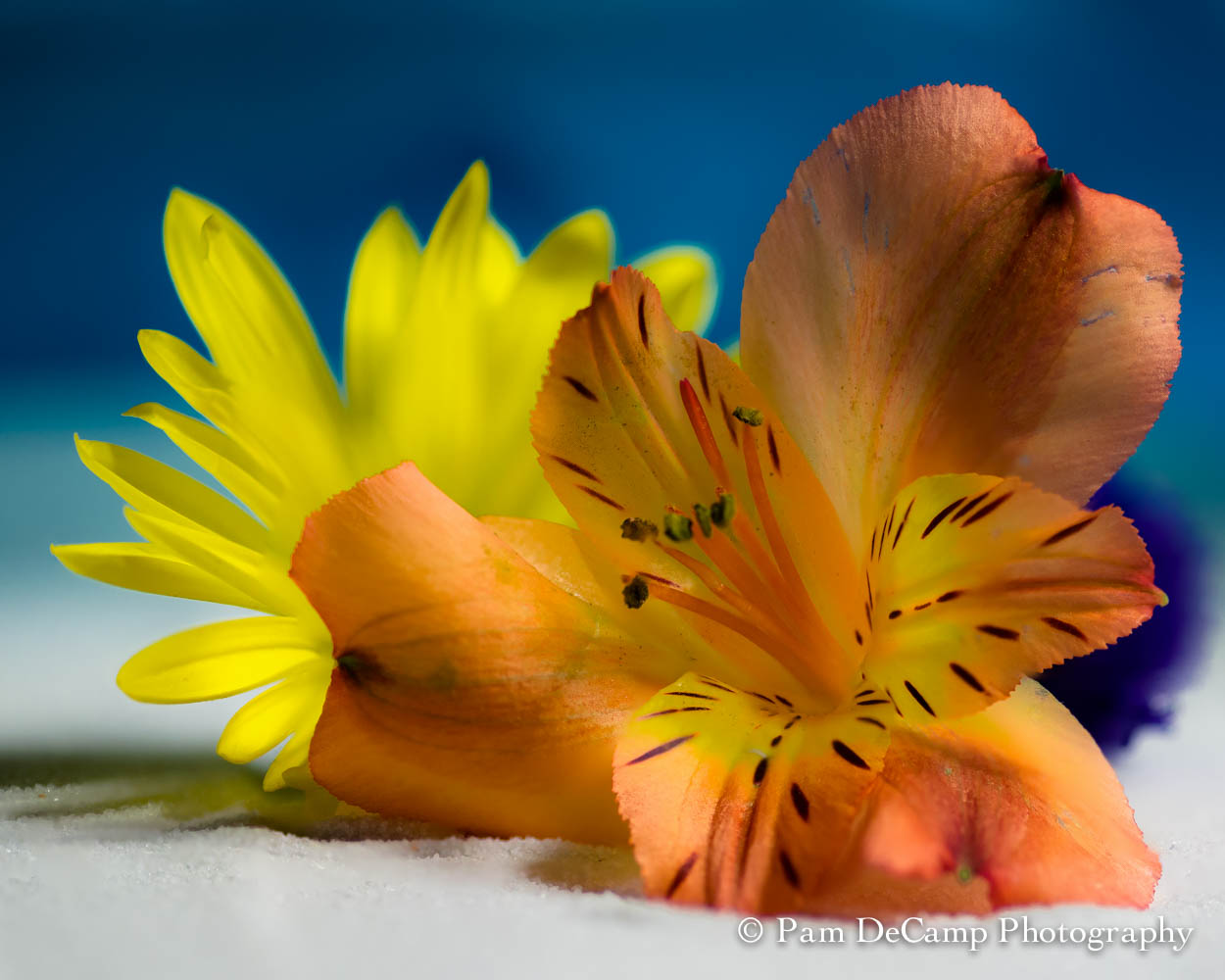
Image Created Using Focus Stacking
I decided to try focus stacking. Focus stacking is when you take a series of images and you focus on one section of the image at a time, then save them as PSD images. The key is to have your camera on a tripod so you do not change position.
Open the images then go to File>Scripts>Load Files into Stacks. After you stack the files you go to Edit>Auto-Blend-Layers.
The image will be in focus throughout.
This was fun to try. I will have to try it again sometime.
